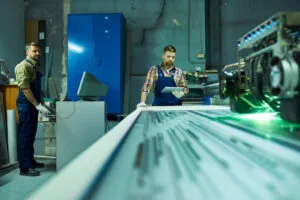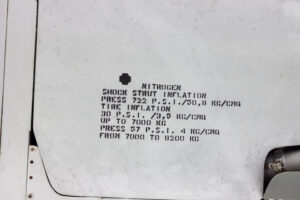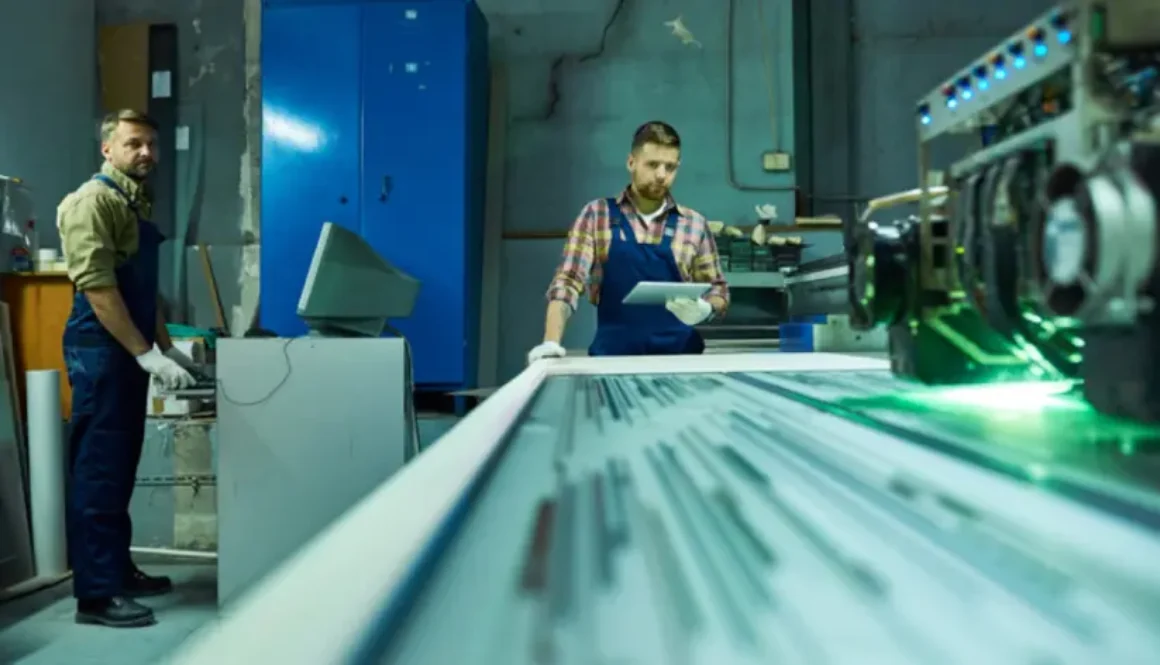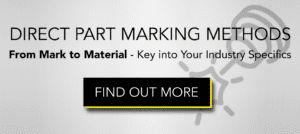Laser Etching vs. Engraving: What to Know

Laser marking, also known as laser engraving or laser etching, is a precise and permanent method of adding marks or designs to various materials. It uses a high-intensity laser beam to alter the surface of the material, resulting in marks that can range from logos and text to intricate patterns.
With both etching and engraving, precision and permanence are key. Whether you’re in the business of personalizing gifts or manufacturing industrial parts, choosing the right laser marking technique can make all the difference. When considering the two primary methods, laser etching vs. engraving, both provide accuracy but only one can lead to the right final product, depending on your goals.
While laser etching and laser engraving are terms that are used interchangeably, there is a notable difference between the two laser marking processes: the depth of the mark left on the product. When laser etching is used, the mark is typically 0.0001”, while laser engraving 0.0001-0.0005” in depth. Meanwhile, deep engraving is considered any mark deeper than 0.0005”.
Another difference between the two is the process of creating the mark itself. While laser etching uses a beam of focused light, laser engraving uses a rotating lens to direct incoming beams to the surface of the product to create the mark.
Choosing the right method for your needs can depend on other factors than the process itself, including:
- Material being marked
- Environment
- Setup costs
- Wear and tear on materials
- Speed
- Precision
What is Laser Engraving?
Laser engraving is an art form that can be seen in many different materials, from metal to wood and plastic. It is a delicate process that requires extreme precision, as the smallest mistake can ruin a project or result in permanent damage to the material. The technique works by using a high-powered laser beam to vaporize or cut away thin layers of the material being engraved, much like sandblasting, but with more control and accuracy over depth and shape. This allows for high contrast marks to be added with amazing precision, resulting in clean lines and smooth surfaces. Additionally, with the right equipment and setup, laser engraving can be done quickly without sacrificing detail or accuracy.
This makes the laser engraving process perfect for projects where exact detail is required, such as commercial part marking for medical implants or industrial parts. In these cases, choosing the right laser marking technique can make all the difference; not only will it give you better results but it can also save time and money on production costs.
Pros and Cons of Laser Engraving
Laser engraving offers a lot of advantages over other methods such as sandblasting or chemical etching. One of the greatest advantages is speed; laser engraving can be done much quicker than traditional methods, allowing for high production rates when dealing with large amounts of parts. Additionally, laser engraving provides more control over the depth and shape of the engraved area, allowing for intricate details to be added with amazing precision.
With laser engraving, accuracy and replication are extremely important. The speed of the process is also a great advantage as it allows for quick turnaround times on orders. Laser engraving can be used to add text, logos, or other images to items quickly and with amazing precision. Additionally, because it’s non-contact, there are no worries about wear and tear on the parts like with traditional methods.

However, there are some limitations to keep in mind when using laser engraving. The process is limited to certain materials that can absorb the energy from the laser beam without being damaged. Metals such as aluminum and stainless steel are common choices, but other materials like glass and plastic can also be engraved. Additionally, laser engraving can be expensive to set up since it requires specialized equipment and the cost of laser engraving varies depending on the complexity and size of the job. Large jobs can take longer to complete and require more equipment or materials which can add to the overall price tag.
It’s also important to consider the environment when using laser engraving. The process generates fumes and particles that can be hazardous if proper ventilation is not present. Wearing protective gear, such as safety glasses and gloves when operating the laser in order to protect against eye damage or burns, is also a best practice. Lastly, lasers require constant maintenance and adjustments in order to stay operational. This can add up over time so it’s important to factor that into cost estimates.
What is Laser Etching?
Laser etching is a surface alteration process that uses a laser beam to create an indelible mark on a variety of materials. It’s widely used in industries such as product manufacturing, packaging, and labeling for branding, customization, and personalization. In some cases, it can also be used for decorative purposes like creating intricate designs on wood or other surfaces.
Laser etching works by using intense beams of light to penetrate the surface of the material and create very fine lines or tiny holes. The laser etching process can be controlled with precision allowing for deeper engraving or shallower marking of the material’s surface. This makes laser etching incredibly versatile as it can be used to mark various materials with different depths, whether for promotional purposes or decorative effects.
Pros and Cons of Laser Etching
Laser etching is ideal for making unique designs on surfaces with precision and accuracy. For example, jewelry designers can use laser etching to engrave special messages or patterns on rings, earrings, and other pieces of jewelry.
Laser etching is an incredibly versatile tool in many different industries thanks to its precise marking capabilities and compatibility with different materials. However, laser etching is typically not the best method to use for marking parts in the automotive industry. This is because most parts are made of metal that require a more heavy-duty engraving method such as deep-cut or rotary engraving.
The strength and longevity of these methods make them a better choice for long-term applications, especially in areas where high temperatures can cause regular laser etching to fade easily. Additionally, deep-cut and rotary engravings can create very intricate designs and shapes much more effectively than laser etching can.
Laser Etching vs. Engraving | Next Steps
Choosing the right method for creating marks on your product requires attention to the speed needed, the material being marked, the precision, and other factors. With these criteria in mind, choosing the right method for optimal efficiency is manageable.
Make the Right Decision
If you are still undecided about the best methods for part traceability on your production line, consider the following resource:


